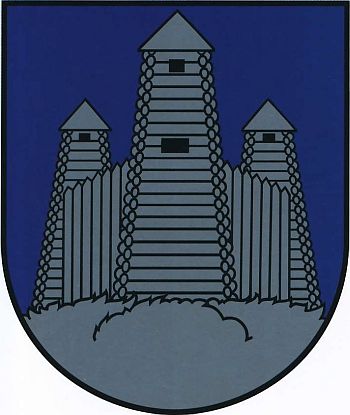Saldus (town): Difference between revisions
Knorrepoes (talk | contribs) No edit summary |
Knorrepoes (talk | contribs) m (Text replacement - "{|width="100%" style="color:black; background-color:#ffffcc;" |width="15%"|50 px|left |width="70%" align="center" |'''Heraldry of the World<br/>Civic heraldry of Latvia - Latvias ģerboņi/Latvijas heraldika ''' |width="15%"|50 px|right |}<seo title="ģerboņis, heraldika" /> " to "{{latvia}}") |
||
| Line 1: | Line 1: | ||
{ | {{latvia}} | ||
''' SALDUS TOWN''' | ''' SALDUS TOWN''' | ||
Revision as of 04:50, 12 July 2015
Template:Latvia SALDUS TOWN
Region : Kurzeme
Municipality : Saldus
Official blazon
Zilā laukā sudraba koka pils ar trīs torņiem uz tādas pašas pamatnes.
Origin/meaning
The arms were granted in 1925.
Saldus, initially called Ciecere, is first mentioned in the 13th century. It was a small wooden castle of Kurši or Zemgali in the almost unsettled district. In 1411 Germans built here a castle, Frauenburg, called Sieva by Latvian inhabitants.
The Northern war (1700-1721) and plague destructed the castle and town and left only small manor, later renamed to Saldus. The town revival took over a century. In 1917 town rights were granted.
The arms show a wooden castle, a symbol for the origin of the town.
Contact and Support
Partners:
Your logo here ?
Contact us
© since 1995, Heraldry of the World, Ralf Hartemink 
Index of the site
Literature : Latvias ģerboņi, 2008










